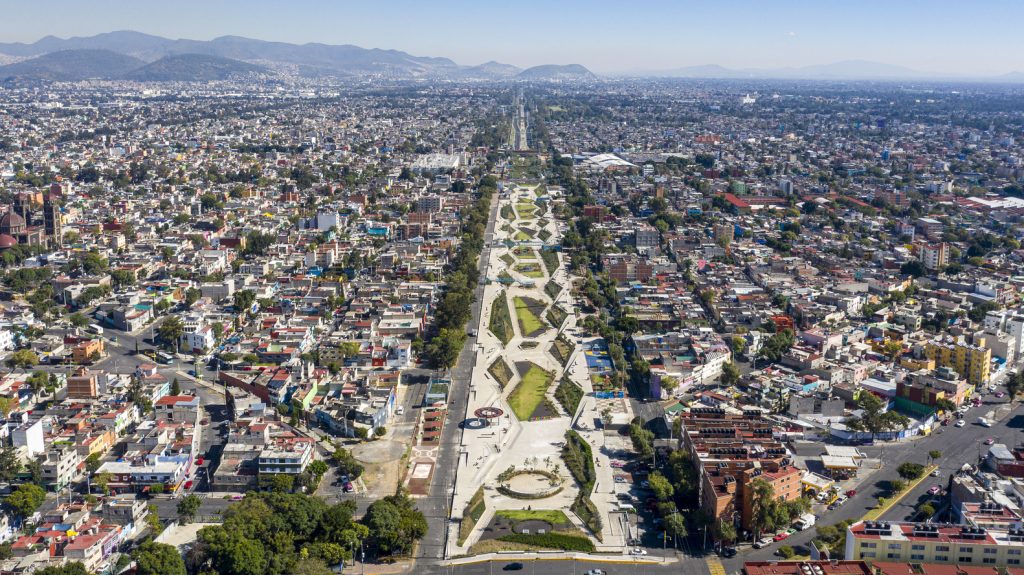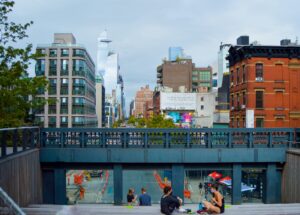The history of hydraulic infrastructure in Mexico City dates back to pre-Columbian times and started from the control of the Lake Texcoco basin. With the passage of time, the historic canals were transformed into roads, drains and some others have completely disappeared. For this reason, in 2019 Mexico City proposed the reinvention of abandoned infrastructure spaces, which resulted in the gradual decomposition of the urban and social fabric. This strategy promoted the creation of public spaces that would stimulate the quality of life of the inhabitants by filling the “voids” of human activity.
Based on this approach, 128 architecture and Urban Design carried out a project under the name “Parque Lineal Gran Canal” located in the section from Avenida del Peñón to Eje 2 Norte, the transformed space integrates an area of 73,000 m2 (7.3 Ha) in its first stage.
The most relevant spatial characteristic is the unevenness or sunken space itself, the space occupied by a canal, in addition to the perimeter wall. The 1 km long strip that isolated more than 20 neighborhoods and almost 100,000 inhabitants no longer exists today. Environmental regeneration governs the intervention based on the reforestation of the space and the replacement of permeable soil, resulting in an increase in relative humidity of more than 16%. The vegetal shade that the new canopy will provide will reduce the temperature between 4° and 5°C, mitigating the urban heat island.
Read the full article on Arch Daily
Author: Monica Arellano
Recommended by Luisa Bravo











More Stories
A stealthy reimagining of urban public space by Elizabeth Diller
Plaza de la Vila in Sencelles by Moneo Brock
Abandoned no more: Mumbai’s new park on previously disused land